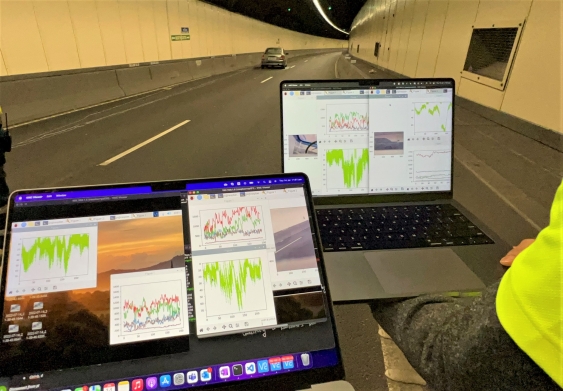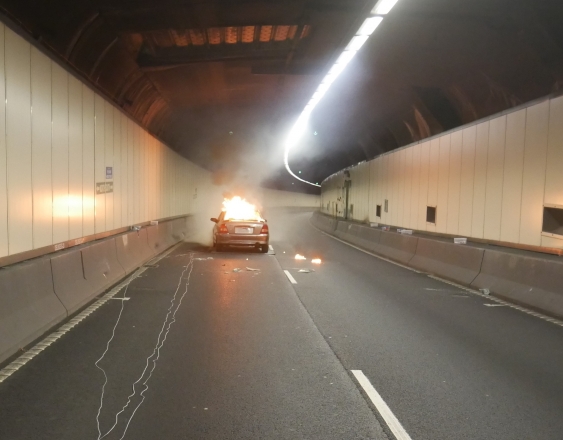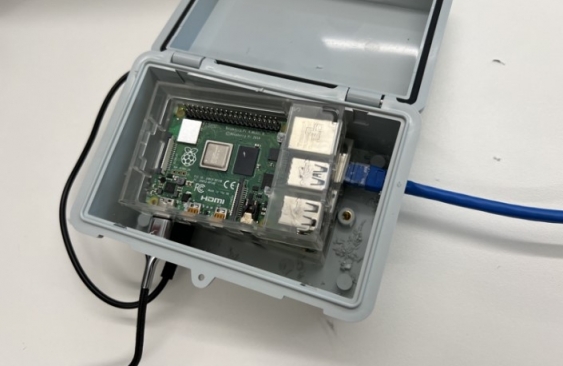创新背景
现有的检测系统很大程度上是基于热成像技术,通过检测没有危险或由实际火灾(可能是汽车排气管故障或散热器过热)引起的烟雾水平或温度变化,经常产生假阳性读数。
创新过程
Aruna Seneviratne教授、Deepak Mishra博士和来自电气工程与电信学院的一个团队设计并建造了一个系统,可以在Wi-Fi信号通过空气时监测它们,并分析由于温度和烟雾等因素造成的环境的详细变化。
研究人员已经确定了火灾期间无线电信号数据中的独特模式,他们软件中的人工智能有助于实时分析环境。
然后,该系统可以更准确地确定大气变化是否是由真正的火灾引起的,如果是,就会发出警报或启动自动喷水灭火系统。

现有的检测系统很大程度上是基于热成像技术,通过检测没有危险或由实际火灾(可能是汽车排气管故障或散热器过热)引起的烟雾水平或温度变化,经常产生假阳性读数。但塞内维拉特尼教授和他的团队能够在午夜悉尼海港隧道内的受控测试中展示他们的新技术。
研究人员与Trantek MST(隧道关键任务系统供应商)和悉尼海港隧道公司(隧道所有者/运营商)合作,设置了一系列发射器和接收器,以监测环境,因为在计划的紧急响应训练演习中,一辆准备好的测试车被引爆并点燃。

研究过程中有一个发射器和一个接收器,研究人员可以监测无线电信号在空气中的传播,随着空气温度的变化,它的密度也会变化,这就改变了研究人员接收信号时的读数特征。事实上,我们已经通过实验证明,这些变化与发射机和接收器之间的环境温度的上升或下降有很强的相关性。
烟和不同的气体,如火灾时产生的一氧化碳,也会影响空气的密度,并在读数中显示出独特的特征。具体地说,这些信号是以无线信道信息的形式捕获的。

系统中还添加了人工智能来分析所有数据,并与基线读数进行比较,以帮助确定是否真的发生了火灾。
Seneviratne教授表示,这项新技术对于提高自动火灾探测系统的信心非常重要,目前自动火灾探测系统有时甚至难以区分火灾和明亮闪烁的霓虹灯。
创新关键点
新南威尔士大学开发的新系统利用了Wi-Fi波具有多种传输频率的事实,即所谓的子载波。就像不同波长的光会受到不同物体的独特影响一样,不同频率的Wi-Fi也会受到不同方式的影响。
因此,Wi-Fi感知系统综合了环境现象对所有Wi-Fi子载波频率的影响,并通过数据处理找到最敏感的频率,以帮助分析。每秒最多可以处理和分析1300个数据包。
创新价值
这项新系统可以应用在广泛的环境中,包括工业场所、商业高层建筑,甚至在家庭中。它可以确定火灾区域,这对警报操作和急救人员至关重要。
组装发射机和接收器阵列还有助于确定特定火灾的区域位置,从而帮助紧急服务部门迅速并有效地作出反应。
除了传感技术的改进,Wi-Fi系统比现有的热成像相机技术便宜得多,而且更容易维护。
Wireless signals combined with AI can make fire detection more accurate
Professor Aruna Seneviratne, Dr Deepak Mishra and a team from the School of Electrical Engineering and Telecommunications have designed and built a system that can monitor Wi-Fi signals as they pass through the air and analyse detailed changes in the environment due to factors such as temperature and smoke.
The researchers have identified unique patterns in radio signal data during fires, and artificial intelligence in their software helps analyze the environment in real time.
The system can then determine more accurately whether atmospheric changes are caused by a real fire, and if so, send out alarms or activate sprinkler systems.
Existing detection systems are largely based on thermal imaging technology and often produce false positive readings by detecting smoke levels or temperature changes that are not hazardous or caused by an actual fire, perhaps a faulty car exhaust pipe or overheating radiator. But Professor Seneviratny and his team were able to demonstrate their new technology in a controlled test inside Sydney Harbour Tunnel at midnight.
The researchers, in collaboration with Trantek MST(Tunnel mission-critical systems provider) and Sydney Harbour Tunnel Company (tunnel owner/operator), set up a series of transmitters and receivers to monitor the environment as a prepared test vehicle was detonated and ignited during a planned emergency response training exercise.
The study involves a transmitter and a receiver, which allow researchers to monitor the radio signal as it travels through the air. As the air temperature changes, its density also changes, which changes the reading characteristics of the signal when the researchers receive it. In fact, we have demonstrated experimentally that these changes are strongly correlated with the rise or fall of the ambient temperature between the transmitter and receiver.
Smoke and different gases, such as carbon monoxide produced during a fire, also affect the density of the air and show unique characteristics in the readings. Specifically, these signals are captured in the form of wireless channel information.
Artificial intelligence was also added to the system to analyze all the data and compare it with baseline readings to help determine if there was a real fire.
Professor Seneviratne says the new technology is important to improve confidence in automatic fire detection systems, which sometimes struggle to tell the difference between a fire and a bright flashing neon sign.
智能推荐
真菌学创新 | 酵母菌“后来者杀戮”生存策略创新研究
2022-11-15酵母所具有“后来者杀戮”生存策略的发现有助于科学研究者了解单细胞微生物的行为、单细胞生物到多细胞生物的进化机制。
涉及学科涉及领域研究方向生命科学理论创新 | 研究人员揭示延长植物蛋白寿命的细胞机制
2022-09-02通过使用拟南芥在蛋白质组中寻找HYPK,测试控制蛋白质寿命机制的关键蛋白质。
涉及学科涉及领域研究方向利用相位相反的相干态微波脉冲光子定义量子四体“薛定谔的猫”态
2022-06-28借助飞行光量子和微波光子促进量子纠缠发展,推动量子计算和量子网络发展。
涉及学科涉及领域研究方向